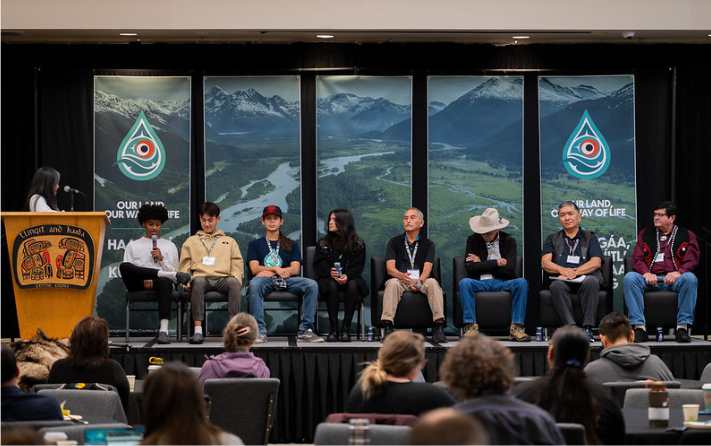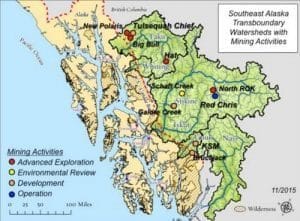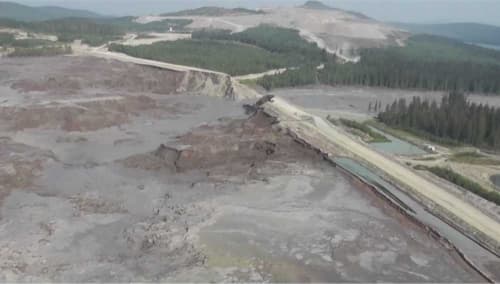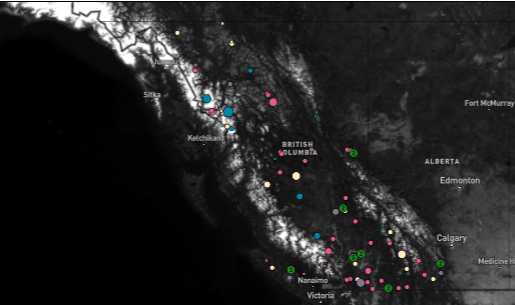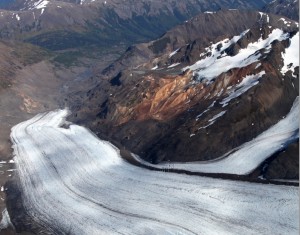
A diverse group of Alaskans said a report released today on the Mount Polley mine disaster in British Columbia (B.C.) provides new evidence that mines planned and under construction in the B.C. headwaters of highly productive Southeast Alaska salmon rivers are a threat to multi-billion dollar fisheries and a way of life for thousands of Alaskans. They call for the U.S. State Department to engage in meaningful bilateral discussions with Canada that ensure better safeguards for salmon before such mines are allowed to move forward.
“Today’s report underscores that, when it comes to the safety of large-scale mines, B.C.’s track record speaks for itself. The Mount Polley disaster is a stark example of B.C.’s stewardship of a project that the government and the developer claimed was safe. We can’t let a similar accident taint the rivers of the transboundary region along the border between northwest B.C. and Southeast Alaska,” said Mark Jensen, mayor of Petersburg Borough, one of Southeast Alaska’s largest fishing communities.
The independent review panel appointed by the B.C. government concluded the dam failed due to a design flaw which was not caught in the permitting process. It stemmed from a portion of the dam’s foundation being built on glacial soil that proved to be unstable as the tailings pond grew heavier. One of the engineers on the panel described Mount Polley as a “loaded gun” waiting to go off. The panel recommended that B.C. adopt better practices and use best available technology with safety a priority over economics. Alaskans are concerned that such fundamental changes in B.C. mining practices won’t be adopted due to time and expense and that there is no guarantee that such changes will actually reduce the long-term risks of transboundary mines.
The Mount Polley tailings dam was approved by Canadian regulators to last in perpetuity, yet it failed in less than 20 years. The August 4, 2014, disaster sent an estimated 6.6 billion gallons of toxic mine waste and wastewater into the Fraser River watershed. The Fraser is one of Canada’s most important salmon-producing rivers. The environmental impacts of the spill will take years to fully comprehend, experts have said.
Mount Polley mine owner, Imperial Metals, is constructing a much larger mine, Red Chris, in the northwest B.C. headwaters of the Stikine River, one of Southeast Alaska’s most prolific salmon producers. A recent independent review of the Red Chris tailings storage facility found serious design flaws, raising concerns that a similar Mount Polley-style disaster would contaminate Alaska waters. Despite this, Imperial Metals still plans to open Red Chris mine in early 2015.
“The transboundary region supports fisheries vital to Southeast Alaska. A similar accident at a transboundary mine like Red Chris could release large quantities of tailings that are more toxic than the Mount Polley spill. The Mount Polley disaster was a clear sign that B.C. cannot assure us transboundary waters and fish won’t be polluted by the province’s aggressive mining agenda. The Sitka Assembly passed a resolution in October 2014 urging stronger oversight to ensure that Alaska resources are not harmed by upstream development in B.C. A review by the International Joint Commission would be a step in the right direction,” said Mim McConnell, mayor of the City and Borough of Sitka.
The International Joint Commission is a bilateral commission established by the 1909 Boundary Waters Treaty, charged with resolving transboundary water disputes between the U.S. and Canada.
“Under the Boundary Waters Treaty, the U.S. and Canada are both committed to not polluting waters on their own side of the border to the injury of health or property on the other side of the border. Canada is not taking their treaty obligation seriously. We ask the State Department to work with Canada to ensure the treaty is respected and our interests are protected,” said Heather Hardcastle, a gillnetter and co-owner of Taku River Reds based in Juneau.
Even before the Mount Polley disaster, Alaskans had been pushing for the U.S. to have an equal seat at the table with Canada in discussions about how and if watersheds shared by both countries are developed. This equal footing currently doesn’t exist. The vast transboundary region is not only home to multi-billion dollar seafood and tourism industries, but to many tribal citizens, as well.
Multiple large-scale, open-pit mines like Red Chris are currently in various stages of development in the watersheds of three productive transboundary salmon rivers, the Taku, Stikine and Unuk, which flow from B.C. into Alaska. These projects raise red flags for many, including tribes, commercial and sport fishermen, tourism operators, municipalities and political leaders who have spoken out in numerous resolutions and letters.
“Today’s report raises more concerns than it answers. We need to halt these mines from moving ahead until our concerns are addressed. We have the right to be consulted on actions that could harm our culture and livelihoods, even if those actions are happening in Canada. This is why we need the State of Alaska and the State Department to do all they can to defend our way of life in the face of these threats,” said Rob Sanderson Jr., co-chair of the United Tribal Transboundary Mining Work Group, which includes 13 federally recognized tribes.
In late December 2014, despite thousands of objections from Alaskans and Canadians, including Alaska’s congressional delegation and legislators, the Canadian federal government approved KSM, a massive mine project just 19 miles upstream of the Alaska border. Critics compare the size of KSM to Pebble, a hugely controversial mine proposal in Bristol Bay. If built, KSM could leach acid mine drainage, heavy metals and other toxins into the transboundary Unuk River that drains into Misty Fjords National Monument near Ketchikan, Alaska.
Clay Bezenek, a Ketchikan-based gillnetter, is also frustrated with B.C.’s fast-tracked mining plans for projects like KSM.
“The Unuk River has been kept wild by the people of Southeast Alaska. The importance of the health of the Unuk to our commercial seine, gillnet and troll salmon fisheries can’t be overstated. To not have all concerned parties at the table when discussing projects of this magnitude is a mistake. I’m calling on Alaska Governor Bill Walker and on Secretary of State John Kerry to help get us to the table now,” said Bezenek.
Today’s report focuses on the technical and engineering reasons for the Mount Polley dam failure and does not address shortcomings in Canada’s mining regulations that may have contributed to the dam failure. Although the report recommended changes to mining practices, there is no guarantee any of these measures will be adopted at proposed transboundary mines or if such measures can ensure tailings dams will not fail over the very long term.
“The tailings dams at these mines are environmental time bombs. It’s not a question of if they are going to fail, it’s just a question of when. We just shouldn’t be putting large tailings dams near vital water sources and fish habitat,” said Marsh Skeele, a troller and vice president of Sitka Salmon Shares, a seafood company based in Sitka.
More information, images and a map are available at www.salmonbeyondborders.org

